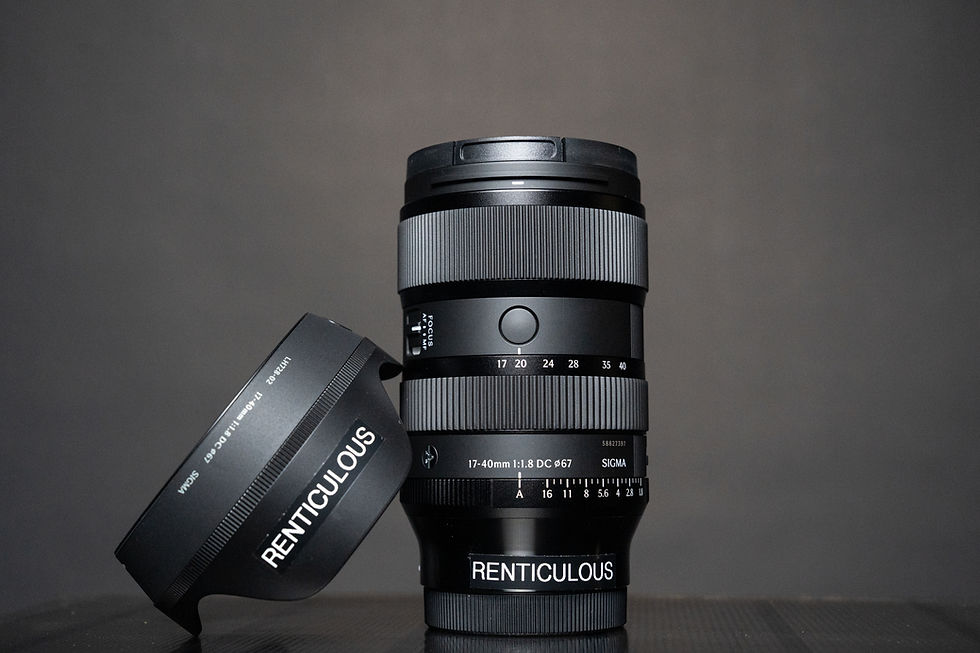All About Astrophotography
- renticuloussg
- Mar 20, 2023
- 3 min read
Astrophotography is the art and science of taking photographs of celestial objects such as stars, planets, galaxies, and nebulae. With advancements in camera technology and digital image processing, it has become easier than ever before to capture stunning images of the night sky.

To get started with astrophotography, you will need a few essential pieces of equipment. First and foremost, you will need a camera with manual controls that allow you to adjust settings such as shutter speed, aperture, and ISO.
In addition to a camera, you will need a sturdy tripod to keep your camera steady during long exposures. A remote shutter release or intervalometer can also be helpful for taking photos without introducing camera shake.
One important thing to keep in mind when photographing the night sky is the exposure time. Because the stars are moving across the sky, long exposures can result in star trails, which can be a stunning effect but may not be what you are looking for. Generally, exposures of 20-30 seconds are ideal for capturing stars without trails, but this can vary depending on the focal length of your lens and the movement of the stars.

Some additional tips and techniques to look out for:
Use a Wide-Angle Lens: A wide-angle lens is great for capturing a large portion of the night sky, which can be especially useful for capturing the Milky Way. A lens with a focal length of 14-24mm is ideal for astrophotography.
Learn How to Focus Your Camera: Focusing your camera at night can be challenging, especially if you're using a manual focus lens. One technique is to use the live view function on your camera and zoom in on a bright star to manually focus your lens.
Use a High ISO: When photographing the night sky, you'll need to use a high ISO to capture enough light. Start with an ISO of 3200 and adjust as needed.
Experiment with Different Exposure Times: As mentioned earlier, exposure time is an important factor in astrophotography. Experiment with different exposure times to find the sweet spot for your equipment and the conditions you're shooting in.
Choosing the right camera: Canon:
Canon EOS R5: This camera offers a high-resolution full-frame sensor, 5-axis in-body image stabilization, and a fast autofocus system, making it a great choice for astrophotography.
Canon EOS RP: This camera is a more affordable option than the R5, but still offers a full-frame sensor and good low-light performance.
Sony:
Sony Alpha a7S III: This camera is known for its excellent low-light performance and high dynamic range, making it ideal for astrophotography.
Sony Alpha a7R IV/V: This camera offers a high-resolution full-frame sensor, which is great for capturing fine details in the night sky.
Sony Alpha a6600: If you're looking for a smaller and more affordable option, the a6600 is a great choice. It features a 24.2 megapixel APS-C sensor and a fast autofocus system.
Choosing the right lens:
Canon:
Canon RF 15-35mm f/2.8L IS USM: This lens offers a wide-angle view and a fast maximum aperture, making it a great choice for capturing the night sky.
Canon RF 24-70mm f/2.8L IS USM: This lens offers a versatile focal range and a fast maximum aperture, making it a great choice for both wide-angle and zoomed-in astrophotography shots.
Canon RF 70-200mm f/2.8L IS USM: This lens offers a longer focal length and a fast maximum aperture, making it a great choice for capturing detailed shots of celestial objects.
Sony:
Sony FE 12-24mm f/2.8 GM: This lens offers an ultra-wide-angle view and a fast maximum aperture, making it a great choice for capturing the night sky.
Sony FE 12-24mm f/4 G Lens: This lens offers an ultra-wide-angle view at a slower aperture, making it a great choice for capturing the night sky and keeping it affordable.
Sony FE 16-35mm f/2.8 GM: This lens offers a wide-angle view and a fast maximum aperture, making it a great choice for capturing detailed shots of the night sky.
Sony FE 70-200mm f/2.8 GM OSS: This lens offers a longer focal length and a fast maximum aperture, making it a great choice for capturing detailed shots of celestial objects.
Still can't decide on what you need? Speak to our staff if you require more recommendation on the equipment you are choosing!

Astrophotography can be a challenging and rewarding hobby, but it requires patience and persistence. Be prepared to spend time experimenting with different techniques and equipment, and don't be afraid to try new things. With practice and dedication, you can capture stunning images of the night sky that will amaze and inspire others.



